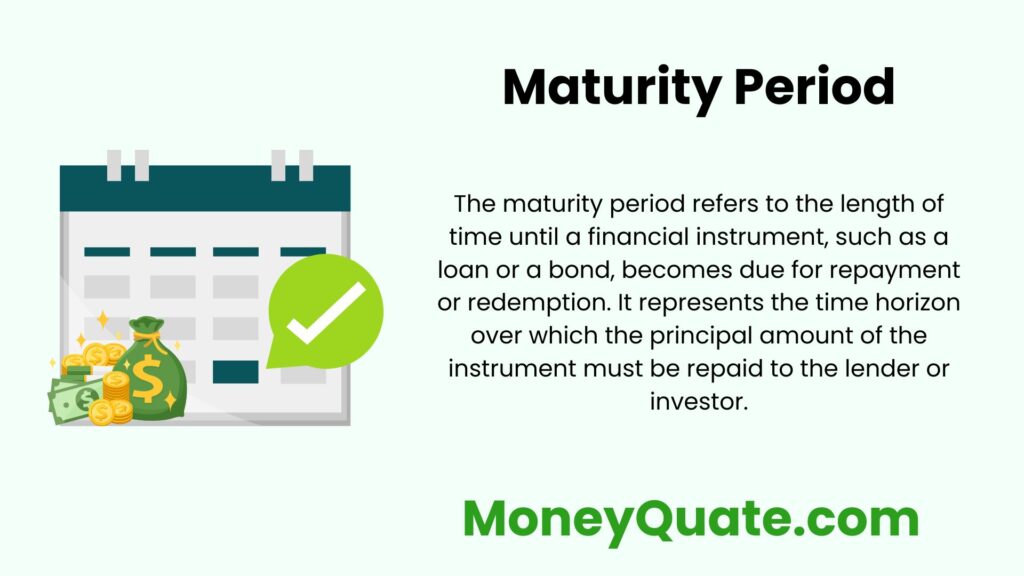The maturity period is a critical aspect of financial instruments, influencing investment decisions, interest rates, and the overall risk-return profile. Understanding the maturity period allows investors and borrowers to make informed decisions aligned with their financial objectives and time horizon.

Contents
Meaning
The maturity period is the timeframe over which the issuer of a financial instrument agrees to fulfill its obligations to the holder of the instrument.
It represents the time until the principal amount of the instrument is repaid to the investor or lender.
Types of Maturity
- Short-Term Maturity: Typically refers to financial instruments with a maturity period of one year or less. Examples include Treasury bills, commercial paper, and short-term loans.
- Intermediate Maturity: Refers to financial instruments with a maturity period ranging from one to ten years. Examples include corporate bonds and medium-term loans.
- Long-Term Maturity: Refers to financial instruments with a maturity period exceeding ten years. Examples include long-term bonds, mortgages, and certain types of loans.
Impact on Risk and Return
Shorter maturity periods are generally associated with lower risk but lower returns, as investors receive their principal back sooner.
Longer maturity periods often entail higher risk but potentially higher returns, as investors are exposed to fluctuations in interest rates and economic conditions over a longer timeframe.
Interest Payments
Financial instruments with longer maturity periods may involve periodic interest payments to investors until maturity, while some instruments, such as zero-coupon bonds, may not pay interest until maturity.
Role in Investment Strategies
Investors consider the maturity period when constructing their investment portfolios, balancing risk and return objectives.
Longer-term investors may opt for instruments with longer maturity periods to capture higher potential returns, while those with shorter investment horizons may prefer shorter-term instruments for liquidity and flexibility.
Example of Maturity Period
Consider a corporate bond issued with a maturity period of ten years. The bond has a face value of $1,000 and pays a fixed annual coupon rate of 5%.
- Issuance: The bond is issued, and investors purchase the bond for $1,000 each, receiving periodic interest payments based on the coupon rate.
- Interest Payments: The bond issuer pays annual interest of $50 ($1,000 face value × 5% coupon rate) to bondholders until maturity.
- Maturity: After ten years, the bond reaches its maturity date, and the issuer repays the bondholders the full face value of $1,000 per bond.
Importance of Maturity Period
- Risk Management: Understanding the maturity period helps investors assess and manage their exposure to interest rate risk and market volatility.
- Financial Planning: Individuals and institutions consider maturity periods when planning for cash flow needs, retirement, and other financial goals.
- Capital Allocation: Companies and governments strategically issue financial instruments with varying maturity periods to meet funding requirements and manage debt obligations effectively.
- Market Dynamics: The maturity period influences market dynamics, affecting demand, pricing, and liquidity in financial markets.